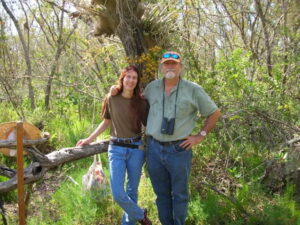Roger L. Hammer
Our guest speaker will be Roger L. Hammer, whose presentation will be “Pine Rocklands – A Globally Imperiled Plant Community.” Pine Rocklands once covered the Miami Rock Ridge but development and agriculture have reduced the original 185,000 acres in southern Miami-Dade County to less than 2% of its original coverage. This program focuses on the plants that make up this important plant community, and the wildlife they support.
Bio: Roger Hammer is a professional naturalist, author, and survivalist instructor for the Discovery Channel’s reality TV show Naked and Afraid. He grew up in Cocoa Beach, served in the U.S. Army from 1965–1968, and spent 33 years as the manager of the 120-acre Castellow Hammock Nature Center for the Miami-Dade County Parks Department. He received the first Marjory Stoneman Douglas Award presented by the Dade Chapter of the Florida Native Plant Society in 1982, Tropical Audubon Society honored him with the prestigious Charles Brookfield Medal in 1996, and in 2003 he received the Green Palmetto Award in Education from the Florida Native Plant Society. He has given keynote speeches at Florida Native Plant Society state conferences, the 2008 World Orchid Conference, and the 2016 Florida Wildflower Foundation symposium. In 2012 he received an honorary Doctor of Science degree from Florida International University and a lifetime achievement award from the Florida Native Plant Society, Tropical Audubon Society, and the North American Butterfly Association.
Roger is an avid long-distance solo canoeist, kayak-fishing enthusiast, wildflower photographer, and the author of Everglades Wildflowers, Florida Keys Wildflowers, Central Florida Wildflowers, Complete Guide to Florida Wildflowers, Exploring Everglades National Park and The Surrounding Area, Paddling Everglades and Biscayne National Parks, Foraging Florida, Attracting Hummingbirds and Butterflies in Tropical Florida, and Florida Icons—50 Classic Views of the Sunshine State. He lives with his wife, Michelle, in Homestead, Florida.
For Atala enthusiasts, did you know?!
In 1979 I went to Virginia Key to explore a small hammock when I noticed some red larvae with rows of yellow dots down their sides feeding on the native cycad called coontie (Zamia integrifolia). I had read in my 1965 Peterson’s Field Guide to Butterflies of Eastern North America that the Florida Atala butterfly used coontie as a larval host plant, but was presumed extinct. I collected some leaves with larvae on them and brought them home to rear, and when they hatched, I was shocked to see that they were Atala butterflies. I then borrowed a dozen potted coontie plants from a friend’s nursery, and hid them in the area where I’d found the larvae, and when I returned a week later, there were eggs all over them. I then kept rearing them until I had enough to introduce into county preserves where there were wild coontie plants, and as I reared even more, I was able to get permission to introduce them into state parks in Miami-Dade, Broward, and Palm Beach counties, within the Atala’s historic range, along with Everglades National Park. Eventually I released some in Fairchild Tropical Botanic Garden where it was discovered that they would not only feed on the native coontie, they would eat other species of Zamia as well as cycads in different genera. And, over the years, gardeners began moving larvae around, even well outside the Atala’s historic range. The discovery even made it into National Geographic magazine. I’m still waiting on fame and fortune!!

